Lightning; Bunny;
Planets, Extragalactic Supernova Project, Comet 21P
Posted: 1 August 2018
Before sunrise on Tuesday, 24 July, a thunderstorm came through with lots of lightning and some rain (0.1"). Some of the lightning was captured on one of my webcams:


The sky was mostly cloudy on Tuesday. About 30 minutes before sunset I took this photo of a bunny relaxing:

Wednesday morning, 25 July, I got up early to try to see/photograph another SpaceX Falcon 9 launch from Vandenberg AFB in California. Unfortunately, the rocket was "no joy" from here due to a cloudy sky. My previous (excellent) view of a VAFB Falcon 9 launch was in December 2017.
Thursday afternoon, 26 July, the sky began clearing, giving hope of opening the observatory that night although an overcast sky forecast remained. And of course, as sunset approached the sky clouded up again. Friday, 27 July, was partly cloudy during the day, but shortly after sunset another thunderstorm came through with lots of lightning but little rain (0.1):



Saturday, 28 July, was mostly cloudy. There was a repeat thunderstorm performance after sunset that continued until after midnight with lightning and rain (0.2"):

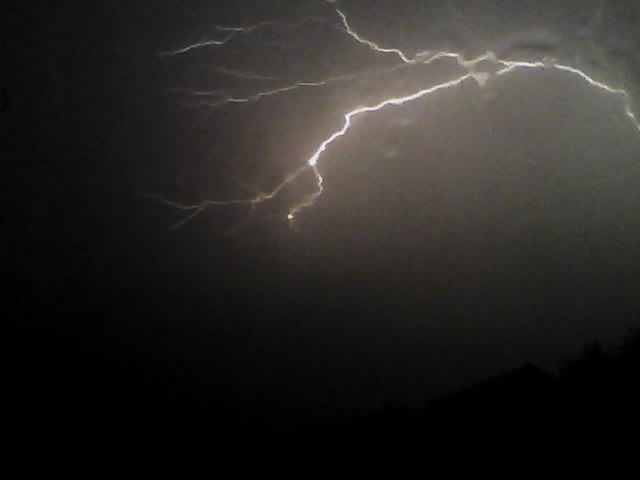


On a cloudy Sunday morning, 29 July, I went to the observatory to do a minor repair of my Starbound Observing Chair. The seat cover had developed a split (due to over 10 years of frequent use I suppose). I had initially contacted an upholstery repair company in Tucson, but the professional repair would have cost about $100. I then considered using duct table, but decided to try automative hose tape. The hose tape should (I hope) last a long time in the extreme conditions that can occur in the observatory. I purchased a Victor For Car Hose Bandage Black Vinyl from a local Ace Hardware store ($1.99 vs the $2.39 online price). Here are before and after photos:


The sky was still cloudy on Monday, 30 July. Tuesday, 31 July, the sky was mostly clear during the daytime, but with the usual overcast sky forecast for that night. The sky was partly cloudy that night so I decided to open the observatory.
With this run of cloudy nights I missed observing Mars during the 27 July opposition (the best since 2003). I also missed observing Mars at its closest approach to the Earth the night of 30 July 2018 (and the closest it will be until 2035). Fortunately, I haven't missed seeing much on Mars due to the global dust storm that is occurring there and hiding surface details.
Since "First Light" at Cassiopeia Observatory on 18 August 2009, July continues to be the worst month for observing:

|
Open: Tuesday, 31 July 2018, 1900 MST Temperature: 82°F |
Session: 1265 Conditions: Partly cloudy, breezy |
Equipment Used:
12" f/8 LX600 w/StarLock
2" 24mm UWA eyepiece
2" 4X Powermate
Camera:
D850 DSLR
SYNCed the observatory clock to WWV.
I noticed that my observing chair tape repair was loose. I guess I should have cleaned the dust off the seat before applying the tape.
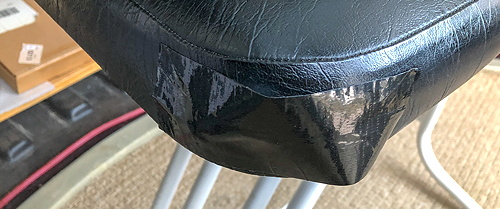
This is how the sky looked a few minutes before sunset (D850 DSLR, f/8, 1/250sec, ISO 400, 8mm Fisheye lens; North at top, East at left):

1916 MST: LX600 ON, StarLock OFF, High Precision OFF.
Viewed Venus, 102X. A nice quarter phase was visible. Seeing was not very good.
1920 MST: viewed Jupiter, 102X and 406X. One moon (Ganymede) was visible and the Great Red Spot was rotating out of view.
Mounted the D850 DSLR at prime focus + 4X Powermate.
1926 MST: sunset. Calm now.
This is a stack of 641 video frames, 1080p, 60fps, DX, 1/125sec, ISO 1600, using Lynkeos:

Slewed to Saturn. This is a stack of 568 video frames, 1080p, 60fps, DX, 1/60sec, ISO 4000:
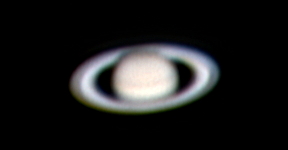
This is a full-frame single image photograph of Saturn, prime focus + 4X Powermate, 1/10sec, ISO 1600:
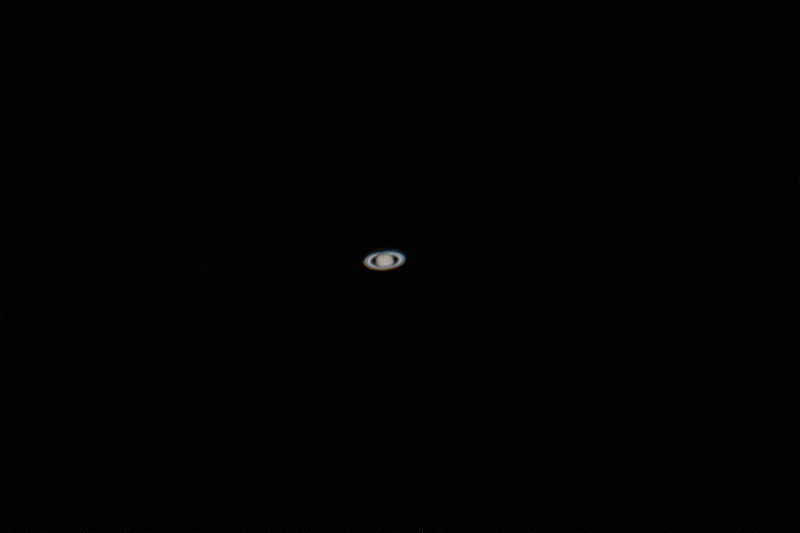
2021 MST: viewed Saturn, 406X. Seeing was not great but was a nice view.
2024 MST: Mars was rising over the hill to the southeast.
2027 MST: viewed M64 (Black Eye Galaxy), 102X. Hoped to image it a little later, although it was getting low in the western sky.
I stepped outside of the observatory and took this handheld D850 DSLR photo of the sky showing the planets Mars, Saturn, Jupiter, and Venus (f/3.5, 1/2sec, ISO 6400, 8mm Fisheye lens):
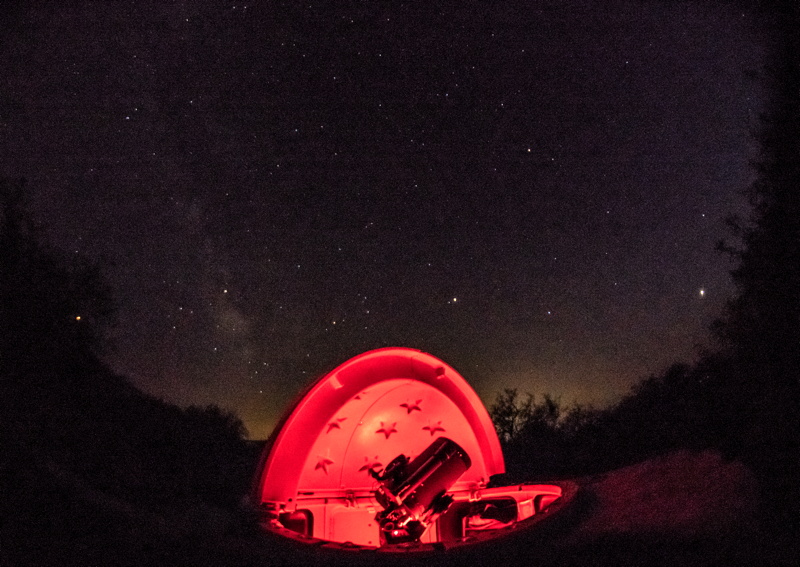
Mouseover or tap on image for labels
The Milky Way and the constellations of Sagittarius, Scorpius, and Boötes are also visible in the photo.
Returned to the observatory. Tried to image M64 (Black Eye Galaxy) but the StarLock would not lock onto a guide star. The galaxy was too low in the sky. Will try again on a future session.
Slewed to Deneb and SYNCed the AutoStar. Then slewed to the star KIC 9832227, which is predicted to be a "red nova" in the early 2020s. This is a StarLock autoguided, 30 second, ISO 5000, White Balance 5000K, image at prime focus:

I then imaged the galaxies NGC5005 and NGC5055, StarLock autoguided, 5 minutes, ISO 6400, WB 5000K, for my Extragalactic Supernova Project.
NGC5005

NGC5055 (M63, Sunflower Galaxy)
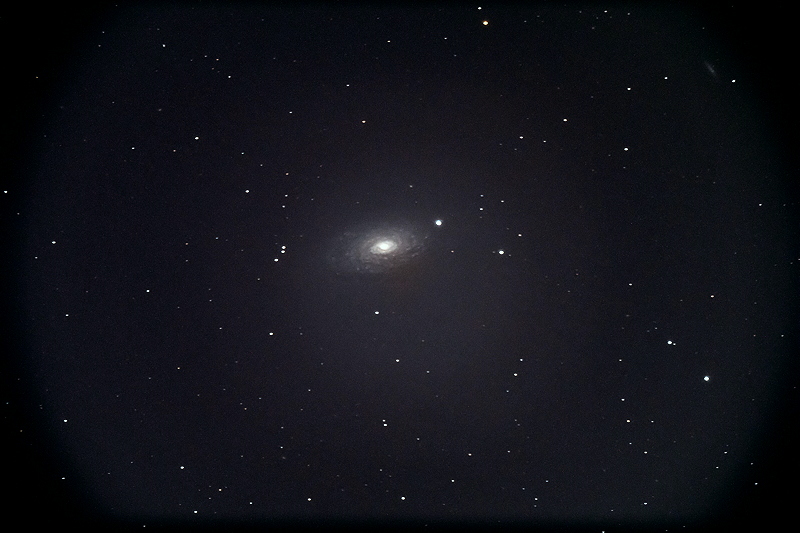
2200 MST: eastern sky brightening from the rising waning gibbous Moon.
2203 MST: Wi-Fi ON. Used SkySafari 6 Pro on my iPhone 8 Plus to GOTO the faint Comet 21P/Giacobini-Zinner. This is a StarLock autoguided, 1 minute, ISO 5000, WB 5000K, image at prime focus:

2221 MST: Wi-Fi OFF.
Slewed to Mars. It was one day past its closest approach but still very bright and large. Mounted the D850 DSLR at prime focus + 4X Powermate. This is a single full-frame image, 1/100sec, ISO ISO 800:

Although the surface of Mars is still mostly obscured by the global dust storm, a large dark area is visible about the South Polar Ice Cap. The blue shield cloud formation is visible over the north pole.
This is a stack of 655 video frames, 1080p, 60fps, DX, 1/160sec, ISO 800:

2252 MST: removed the camera and viewed Mars, 102X. Very bright in the eyepiece. Some surface features visible through the dust. At 406X the view was better (dimmer) although seeing was not very good. The South Polar Ice Cap and the northern blue shield cloud formation were visible. I'm glad I finally got to get a look at Mars during this close approach to the Earth.
2259 MST: the waning gibbous Moon was rising over the hill.
2304 MST: LX600 OFF.
|
Close: Tuesday, 31 July 2018, 2315 MST Temperature: 79°F |
Session Length: 4h 15m Conditions: Mostly clear |
I have posted my review of the Tele Vue 2" 4X Powermate.
Comments are welcome using Email. Twitter users can use the button below to tweet this report to their followers. Thanks.
Cassiopeia Observatory Home Page
Copyright ©2018 Michael L. Weasner / mweasner@me.com
URL = http://www.weasner.com/co/Reports/2018/08/01/index.html
